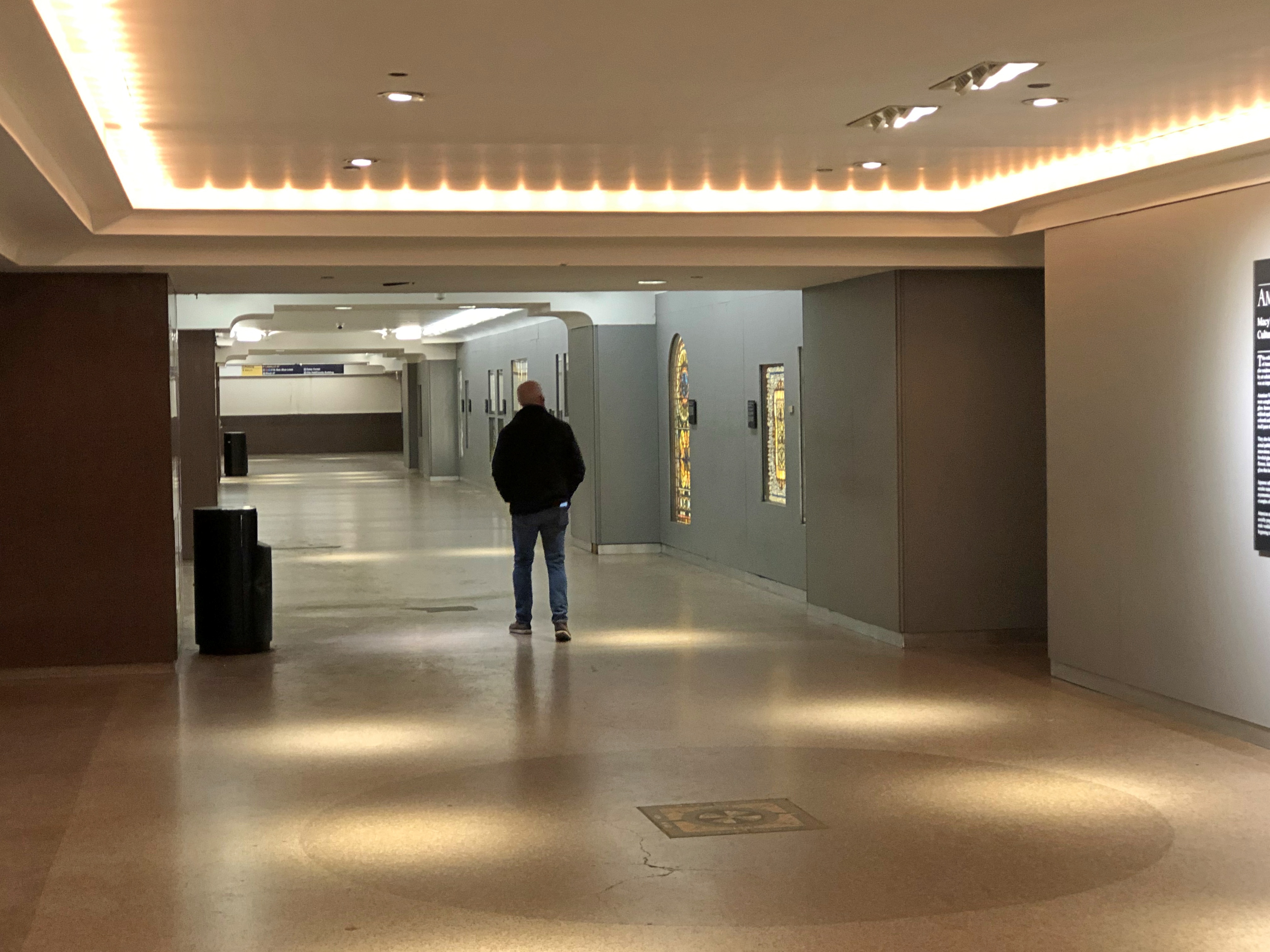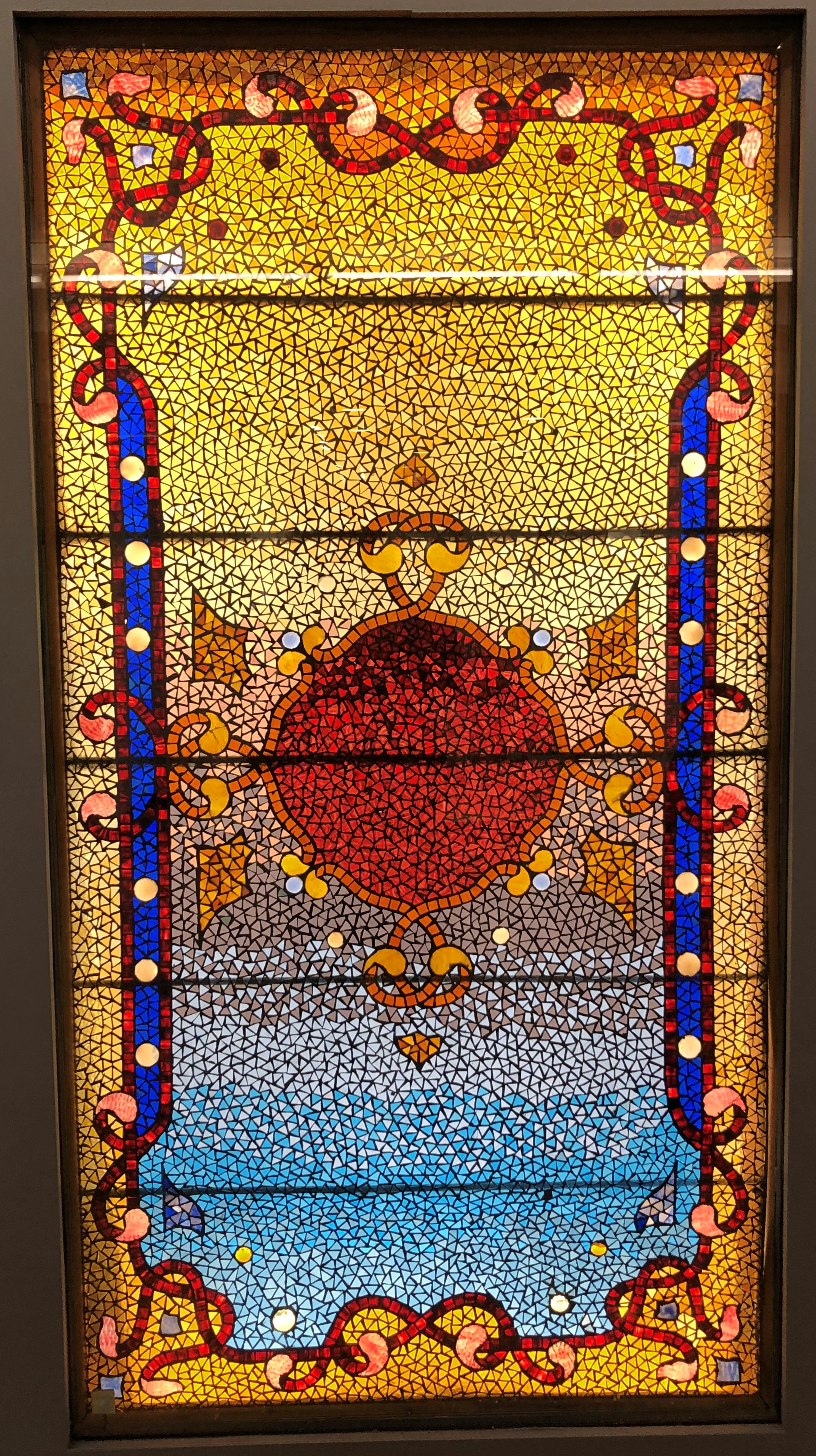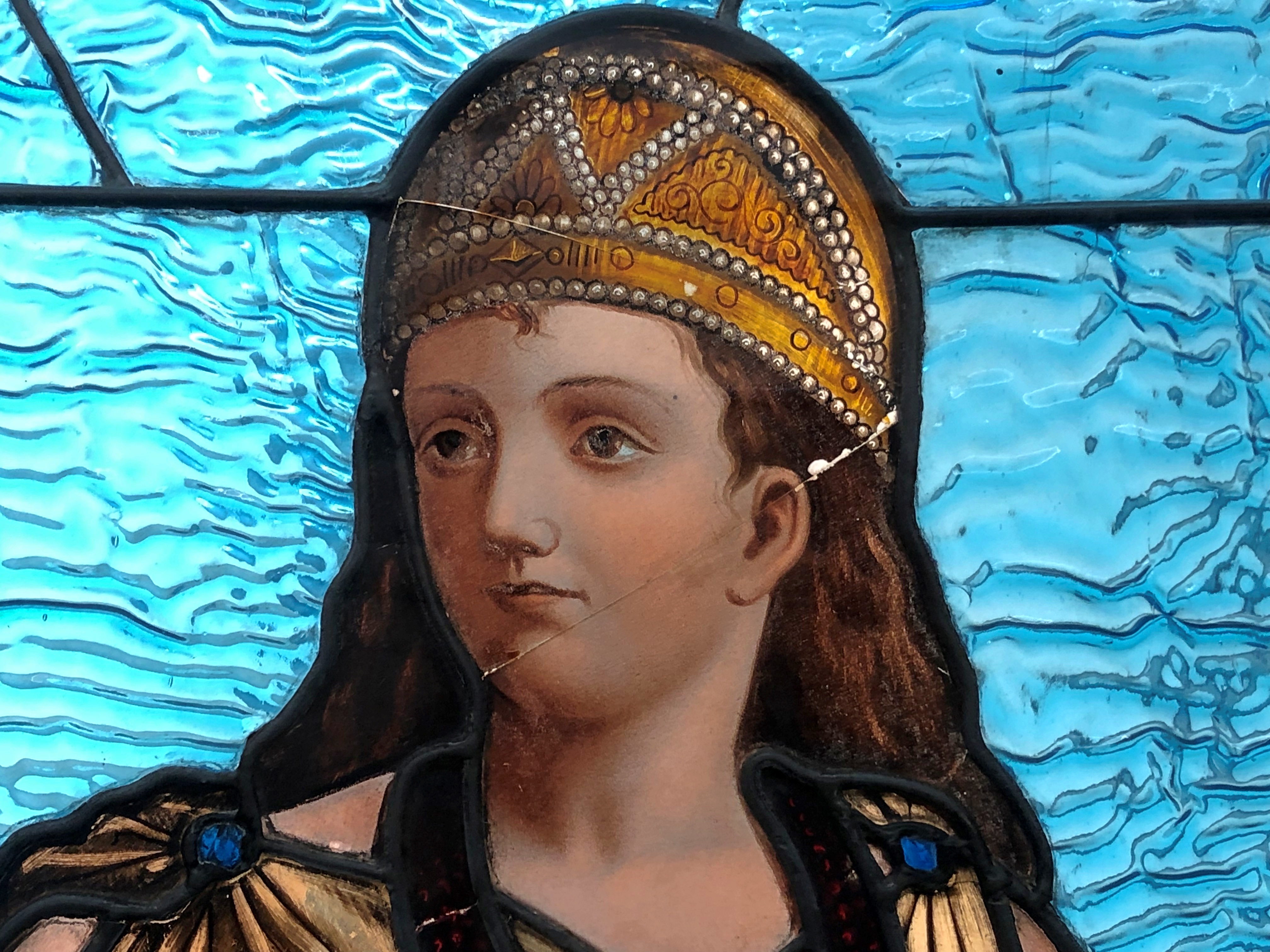If you board the El at the Cumberland station near O’Hare, you can ride to downtown Chicago without any further effort. If you get off at Washington station and head east — but not upstairs, since the El is a subway at that point — you will find yourself in the Chicago Pedway System, a network of underground walkways.
If, like me, you go downtown only sporadically, you won’t know the Pedway System in its entirety. Even regular downtown visitors and residents probably don’t know all of the five miles of tunnel or even the half of it. I didn’t know there was that much until I read it — can that be right?
Anyway, from Washington station, the Pedway goes around the northern edge of Macy’s, which occupies an entire city block. In the wall opposite the basement entrance to that department store, 22 pieces of stained glass from the golden age of American stained glass — installed behind protective clear glass and backlit — welcome curious passersby. Like us late on the morning of December 30.
By golden age, I mean the late 19th century. This one was fabricated by Belcher Mosaic Glass Co., Newark, NJ, 1885-87.
Unknown fabricator, originally in a Louisville mansion, late 19th century. I like to think the mansion belonging to Daisy Fay’s (later Daisy Buchanan’s) family, but I suppose not.
A night owl. Fabricator also a late 19th-century unknown; a lot of them in the exhibit are.

The formal name of the exhibit is The Art of American Victorian Stained Glass. I’m not a scholar on art glass, so I rely on someone else’s expertise, namely the curator of the exhibit, Rolf Achilles.
“We always think that America has been copying everything from Europe. But no,” Achilles said about the exhibit when it was installed in 2013 (which I somehow didn’t hear about). “Painting on glass is one of the things Americans did, but also they stained the glass, and used ornamentation on glass; they added jewels, they added large chunks of glass.
“We have a superb example of this type of work. Look at the jewels, the facet of jewels were cut by diamonds and then chunks of glass were cast. This is uniquely American in the 1880s and 1890s. It was only around late 1890s and 1900s when the European started doing this, and then it is called Art Nouveau and everyone gets excited.”
A detail illustrates his point.
The sign for this one was missing.

One more Belcher. All the stained glass is striking, but this one notches it up to stunning.
“While their era of production was short lived [1884 to 1897], Belcher windows were popular and many examples still survive today, both in situ but more likely in collections,” Wiki says.
Manufacturing came to a sudden end at Belcher. It’s possible the fabrication process, unique to the company and involving various heavy metals, poisoned some of the workers, though that isn’t clear. If so, that would well represent that 19th-century age of beauty and poison, wouldn’t it?